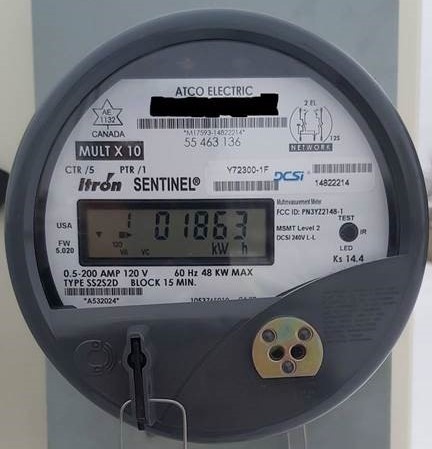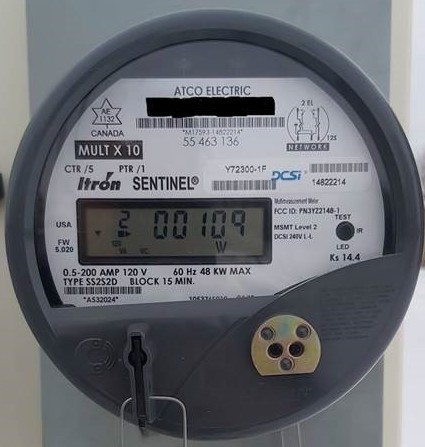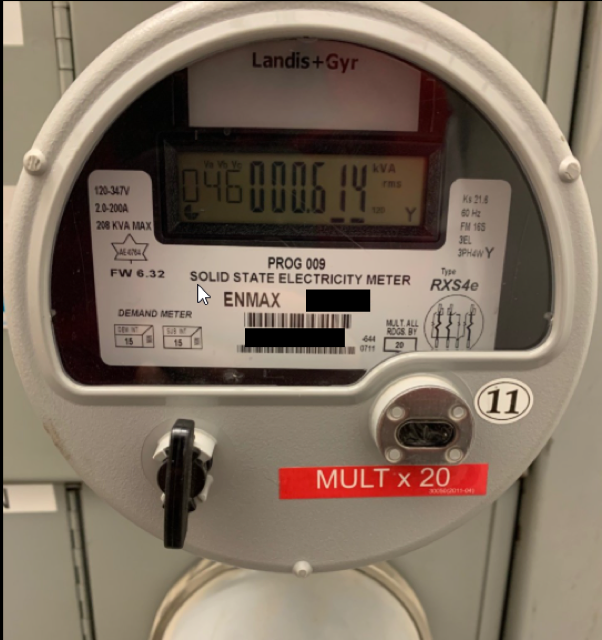A demand meter records how much power demand your business generated during either a 15- or 30-minute time window (Demand Interval) and stores the maximum value in your electricity distributor’s register. Your distributor then calculates your power demand based on the average power you used during that demand interval and includes the demand charge in your utility statement.
Demand charges can be a significant part of your business utility bill. The more electricity used at one time, the higher the demand is, and the harder the grid must work to provide your business site with sufficient power.
The demand meter at your small business site might look very much like the meter you have at home which also records your total electricity consumption in a billing month. The demand meter measures both the total monthly consumption of electricity used (kilowatt-hours) and the peak of power (measured in kilowatts or kilovolt-amperes) your business needed at any given point during the month.
A kilowatt-hour (kWh) is a measure of how much energy supplied by electricity you use to run equipment over a specific period of time.
A kilowatt (kW) is a unit of power that shows the rate at which electricity is transmitted to your business site. 1 kW equals 1,000 watts.
A kilovolt-amperes (kVA) is a unit of power that shows the amount of electrical current a device can draw in. 1 kVA equals 1,000 volt-amperes.
How to read the demand meter
Your power demand meter will cycle through various displays every three to five seconds. The two most important display modes are:
- Usage, and
- Peak Demand
The Usage mode shows how many total kilowatt-hours you have consumed since the meter has been installed. You can find out how much power you used since your last bill reading by subtracting the total monthly consumption on your last electricity bill from the kilowatt-hour usage you see on your meter screen.
In this example, the demand meter screen indicates the consumption of 1,863 kWh.
The Peak Demand mode represents the highest 15 or 30 minutes of power used since your last 30-day billing period. Peak demand helps your electricity provider determine the size of equipment needed to supply energy to your business. Once a demand peak is reached, your charges will be based on that peak for the next twelve months, even if you do not reach that peak again. The twelve months will reset whenever a new peak is hit. The numbers in the example below indicate the maximum power load of 109 watts (0.109 kW) at some time since the last billing.
Some companies use kilovolt-amperes to measure peak demand, as in this example indicating the power load of 0.614 kVA.
How demand meters operate
To understand how your demand meter operates, think about how a car's odometer and speedometer work to measure distance and speed.
- Similar to how an odometer records every kilometer your car travels, your meter records every kilowatt-hour of your electricity consumption.
- Demand is like measuring your car speed. As you push the accelerator, the car goes faster, and the speedometer shows higher readings. When you slow down, the values on the speedometer decrease. Your electricity demand value goes up and down to match how much electricity your business needs at any given moment.
- Similarly, when you stop the car and the speedometer moves back to zero, the demand value also resets back to zero when your new billing period starts.
- Unlike a speedometer, a demand meter records the highest average demand reached and maintained in a demand interval within the billing period.
For example, if your demand reaches 5 kW and stays there for a demand interval of 15 minutes, the stored registered value remains at 5 kW unless or until your demand exceeds that level. If your demand later reaches 6 kW and stays there for 15 minutes, a new index point will be established.
How to lower your demand charges
Understanding how to read your demand meter is an excellent tool to control your electricity utility expenses. These tips will help you use electricity efficiently and, potentially, lower your delivery charges.
- Prior to purchasing new equipment, appliances or tools, familiarize yourself with the power usage requirements. The manufacturer usually indicates power usage in the equipment description. The higher the wattage your new tool uses, the higher the demand and consumption will be.
- Avoid operating multiple pieces of equipment at the same time.
- Track your daily peak demand and forecast the week ahead. If you avoid setting a new peak, you can save your business a lot of money.
- Install energy-saving, high-efficiency, and low-wattage lighting.
- Make sure you replace your aging equipment with energy-efficient products.



